|
03 Mar 2007,
18 Mar 2007, 27 June 2009 - 05 July 2009, 1 Feb 2011, 11 March 2012 Table of Content
- Bill Hung's Linux Server Setup at Home
- Cost
- OS
- Central Processing Unit (CPU)
- Chipset
- Random
Access Memory (RAM)
- Memory
Spec
- Motherboard
- Abit
AB9 Pro SATA Ports
- Realtek
Dual Gigabit Ethernet 8111B
- Video
Display Card
- Video
Card Spec
- Video
Capture Card
- LCD TV Display
- Power
Supply Unit (PSU)
- Hard
Drives
- Partitions
- User Manual
- Blogs
about the project
- Shipped the setup to London
-
Fedora still doesn't work on
the server setup; Ubuntu does
- I burned another hard disk
- I burned another hard disk
- Returns/Refunds
- Reference
-
How To: Install Fedora Core 6 On Intel DG965SS Motherboard
- Disk I/O problem on Abit AB9 Pro,
Core2 system
- Other internet article I found to
solve my problem
GBP349 LCD TV, Samsung 32 inch
US$196 CPU, Intel Core 2 Duo
US$99 Video Card, ATI Radeon 256MB
US$90 Motherboard
US$90 Hard Disk, 300GB SATA
US$84 Video Capture Card, AVerMedia AVerTVHD
GBP29.99 Power Supply
[2009-07-05 London Bill Hung]
[2010-06-29 London Bill Hung]
Ubuntu 9.4
CentOS
Fedora6
Intel Core 2
Duo 1.86GHz, 1066MHz FSB (Front-Side Bus), 2MB L2 (Level 2) Cache
with Heat Sink
3 Mar 2007
US$196
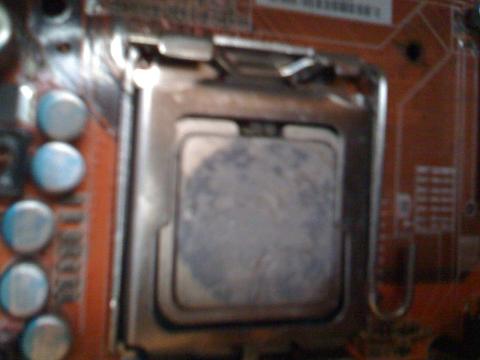
2009-06-27
This server
uses the P965 north bridge chipset, and ICH8 south bridge chipset.
The advantage of P965 over 965 is the ability to run
800MHz DDR2 memory. The 1066MHz Front-side bus (FSB) speed is for SATA
ports. Fedora 6 (downloaded at Feb 2007) and CentOS 5 (downloaded April
2007) didn't support ICH8 south bridge chipset, so the SATA ports
wouldn't work for those. You may set legacy support in the BIOS to fix
the SATA problem.
There is a version called the G965 chipset, which has a
GMA in it. As far as I understood, GMA is a Graphic Processing Unit
(GPU) for graphical computing.
Here is a table of the power usage for recent Intel
Chipset.
| North
Bridge |
975X
|
945P
|
P965
|
| South
Bridge |
ICH7 |
ICH7 |
ICH8 |
| Bus
Speed |
1066MHz |
1066MHz |
1066MHz |
| Memory
|
667 x 2 |
667 x 2 |
ICH8 |
| NB
TDP |
13.5W |
15.2W |
19W |
| SB
TDP |
3.3W |
3.3W |
4.1W |
| Total
TDP |
16.8W
|
18.5W
|
23.1W
|
Source:
http://www.theinquirer.net/default.aspx?article=32230
Patriot 2 x
1GB DDR2 memory 800MHz, Lifetime Warranty
tCLK (CAS Latency) = 2
tRCD (RAS to CAS Delay or Active to CMD) = 3
tRP (RAS Precharge Time or Precharge to Active) = 2
tRAS (Row Active Time or Active to Precharge or Row Active Delay) = 5
3 Mar 2007
US$199.99
Latency
5-5-5-12
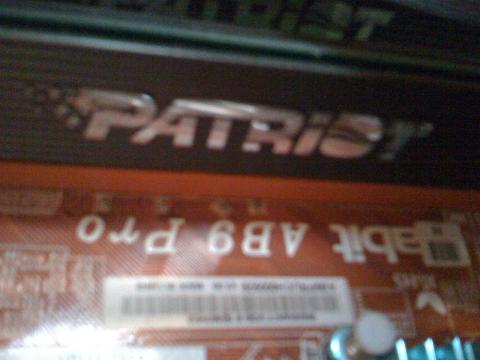
2009-06-27
http://shop1.outpost.com/product/4954981?site=sr:SEARCH:MAIN_RSLT_PG
"DDR2 2GB
PC2-6400 800MHz Dual Channel Patriot PDC22G6400ELK
PATRIOT:
FRYS.com #: 4954981
The Patriot Extreme Performance PC2-6400 Eased Latency line is
engineered to provide PC enthusiasts and gamers enhanced memory
performance without breaking the bank. Capable of operating at 800MHz
with a latency of 5-5-5-12, it is equipped with Patriot's own bladed
heat shields to ensure system stability while running under extreme
overclocking conditions. Available in 1GB and 2GB kits, these memory
modules are compatible with the latest AMD and Intel DDR2 platforms
allowing users to speed up their system instantly.
Detailed
Description [return to top]
* Extreme Bandwidth PC2-6400 (800MHz)
* Eased Latency (5-5-5-12)
* Bladed aluminum heat shields to improve module stability
* 100% Tested and Verified
* Lifetime Warranty
* RoHS Compliant"
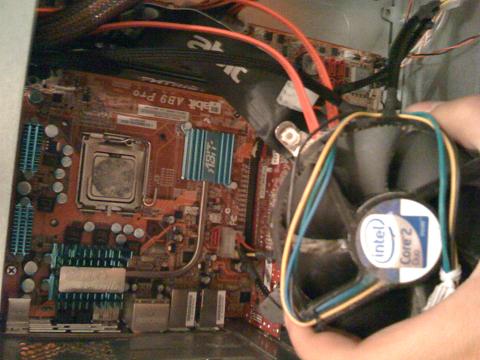
2009-06-27
1 and 2.
User Manual http://billhung.net/collect/docs/ab9_pro_manual.pdf
ABIT AB9 PRO
Intel P965/ICH8R Chipset
(P965 northbridge, ICH8R southbridge)
9 SATA, 3G RAID, 3Gb/s (some
SATA2, some not)
1 E-SATA (External SATA)
1 PCI-Express X16 (forgot how
many X1)
2 Gigabit Ethernet ports (Realtek 8111B Gigabit LAN )
7.1 Channel On board Audio (Realtek ALC 882D)
Silent-OTES Technology
Dual Channel DDR2 800, 12.5GB/s
1066MHz Front-Side Bus Support
3 Mar 2007 US$153
or
17 Mar 2007 US$90
(they are both priced new, with a difference of 2 weeks, I was surprised about these price tags)
21 Mar 2007 US$90
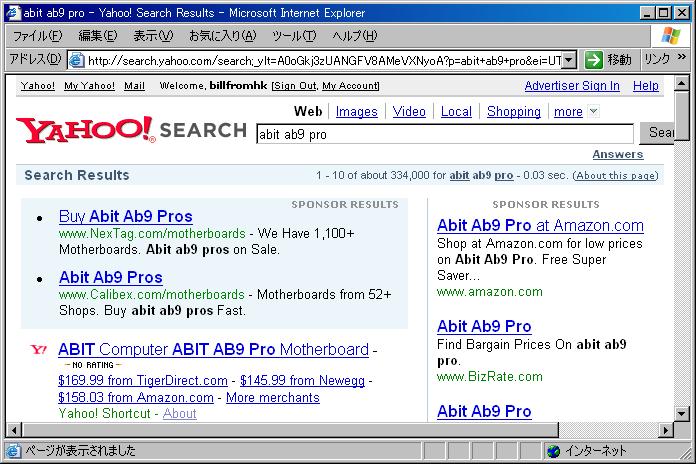 | |
A screenshot of the
abit ab9 board price on yahoo on 21 Mar 2007. Even online has a price
of around $150. Fry's is selling for $90. Very aggressive pricing.
3.
Intel
DG965SSCK C2D 775
Chipset Intel G965/GMA X300 VGA
DDR2 800MHz,
On board Audio and Video,
Gigabit Ethernet
2 PCI
1 PCI-Express x 16
Micro ATX
4 SATA

2009-06-27
# 6 x SATA
3Gb/s offer by Intel® ICH8R support Intel® Matrix Storage Tech(AHCI
& RAID 0/1/5 /10)
# 2 x SATA 3Gb/s offer by JMicron® JMB363 support up to 0,1,0+1,JBOD
RAID function
# 1 x SATA 3Gb/s offer by Silicon Image 3132 to 0,1,0+1,JBOD RAID
function
# 1 x SATA 3Gb/s offer by Silicon Image 3132 (This is the e-SATA?) 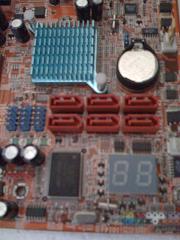
Realtek
Dual Gigabit Ethernet 8111B
Driver
Download Location
http://www.realtek.com.tw/downloads/downloadsView.aspx?Langid=1&PNid=13&PFid=5&Level=5&Conn=4&DownTypeID=3&GetDown=false
Introducing
Realtek RTL8111B Ethernet Controller
http://www.realtek.com.tw/products/productsView.aspx?Langid=1&PFid=5&Level=5&Conn=4&ProdID=11
1.
EVGA e-GeForce7 7100GS 128MB DDR2, 64 bit, PCI-e (express), support
dual monitor, DVI/VGS/S-video
Doesn't work with Fedora Core 6
3 Mar 2007
$59.99
2.
ASUS Extreme AX300E
ATI Radeon X300SE
256 MB Memory
Dual Display (VGA, DVI, S-video)
PCI Express X16
Received on 15 Mar 2007
US$50
3.
Diamond Stealth ATI Radeon X300SE
256 MB Memory
Dual Display (VGA, DVI, S-video)
PCI Express X16
15 Mar 2007
US$99
Both 2 and 3 use ATI Radeon X300SE
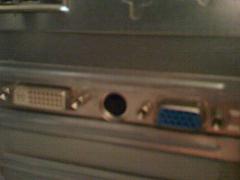
2009-06-27
4.
nVidia GeForce 6800 GTO (rev a2)
512 MB Memory
Memory Interface 256-bit
Memory 512 MB
Memory Bandwidth 35.2 GB/sec.
Fill Rate 6.4 billion texels/sec.
Vertices per Second 600 Million
Memory Data Rate 1050 MHz
Pixels per Clock (peak) 16
Textures per Pixel* 16
RAMDACs 400 MHz
Dual Display (DVI)
external power
2011
$Free from Kish
Video
Card Spec
from ATI
website.
ATI Radeon
X300SE (128MB) PCIe Graphics Card
Models
ATI Radeon X300SE (128MB) PCIe Graphics Card DY596A
Introduction
The ATI Radeon X300SE (128MB) PCIe Graphics Card is a 128 MB graphics
accelerator providing a low profile, PCI Express x16-lane graphics
add-in card.
The ATI Radeon X300SE (128MB) PCIe graphics accelerator is an ideal
solution for those desktop PC customers seeking stable 2D and advanced
3D graphics performance. It is an excellent choice for small business
or large enterprise users engaging in video conferencing or 3D image
manipulation, while improving the everyday business PC experience with
faster frame rates and excellent visual quality.
PCI Express is the next generation I/O bus technology, providing
significant enhancements over the existing AGP and PCI standards. The
ATI Radeon X300SE (128MB) PCIe Graphics Card deliver superior PCI
Express (PCI-E) features including:
* Unprecedented flexibility for new applications and enhanced
performance.
* Full 16-lane support with peak bandwidth support which is double the
peak performance of AGP 8x.
Key Benefits
* 128MB dedicated on-board graphics frame buffer memory removing the
need to share PC system memory.
* Conforms to full PCI Express 1.0A specification for low-profile form
factor (x16 lanes native PCI Express implementation).
* Provides either VGA (64 MB) or DVI-I (128 MB), and S-video output
ports.
* Full DirectX 9.0 support in hardware for optimal performance in DX9
applications.
Memory Peak memory bandwidth
128 MB DDR1 1.6 GB/s
Compatibility
The ATI Radeon X300SE (128MB) PCIe Graphics Card is compatible with the
HP Compaq Business Desktop dx2200 Microtower, dx5150, dx6100 and dx6120
series desktops and dc7100 and dc7600 small form factor and convertible
minitowers desktops.
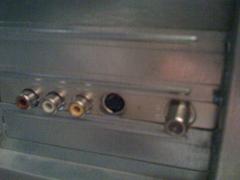
Avermedia AVerTV HD MCE A180 Retail MTVHDA18R, bought in 2007, picture on 2009-06-27
Supported under linux with kernel 2.6.15, technical info at linuxtv.org
Hardware MPEG-2 Encoding
Support free over-the-air ATSC signal 480p, 720p and 1080i
Dual TV Tuner drivers
Input frequency range: 54MHz to 864 MHz
Channel bandwidth: 6MHz
Channels assignment: US standard
Input signal level: -80dBm to -20dBm (8-VSB)
Input impudence: 75 ohms
Compliance: FCC Class B, CE
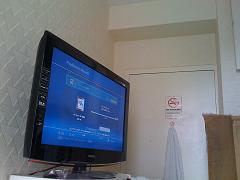
Samsung LE32B450C4 32-inch Widescreen HD Ready LCD TV with Freeview
16kg (with box), 14.9kg for the LCD TV only
Item model number: LE32B450C4WXXU
ASIN: B001UE8LV0
HDMI x 3, VGA port
Dimension: WxDxH 89cm x 17cm x 59cm
Resolution 1366x768
Teletext 1000p
Freeview, a digital terrestrial television platform in the United Kingdom, the DVB-T, basically digital TV
GBP 349 (amazon.co.uk free delivery price GBP 334)
4.Cooler Master Silent Pro M 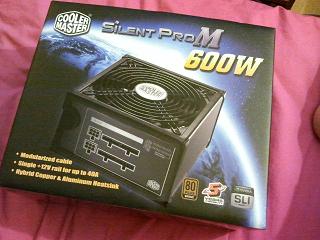
600
watts, 80 plus bronze energy efficient certified. Modular cables.Single
+12V rail for up to 40 Amphere. ATX form factor. Input voltage 90-240V.
Input current 10A@115Vac, 5A@230Vac. Input frequency range 47-63Hz.
Output capacity 600W. Max output capacity 720W. Fan 135mm. Power Good
Signal 100~500ms. Hold Up Time >17ms. Efficiency 85% typically. MTBF
>100,000 hours. Protection OVP/UVP/OCP/OPP/OTP/SCP/OLP. Dimension:
150x150x86mm. Operation Temperature 0~40oC. Regulatory
NEMKO/TUV/CE/GOST/C-tick/FCC/UL BSMI/CCC. Certification SLI/80 Plus
Bronze.
Connectors:
Motherboard 20+4 Pin x 1
CPU 12V 4+4 Pin x 1
PCI-e 6+2 Pin x 2
Peripherial 4 Pin x 5
SATA x 9
Floppy 4 Pin x 1
75.51 pound
[2011-01-23 Bill Hung London]
3. X-Power GTX Light 580W

230V, 50Hz, 10A Input
1 24-pin (20+4) connector
1 4-pin 12V ATX connector
4 4-pin peripheral connecors
3 5-pin SATA connectors
2 6-pin PCI-Express connectors
1 8-pin 12V Adaptor
1 4-pin floppy connector
GBP 29.99
[2009-07-02 London Bill Hung] 2.
Antec EarthWatt 380W
ATX 12V v2.0 PSU (Power Supply Unit)
80 PLUS Certified
80mm Low Noise Fan
17 Mar 2007
US$59.99
update on 2009-06-27: don't know what happened this this power supply 1. Thermaltake - killed this PSU on 2009.06.27 in London
Purepower 220W
ATX 12V 2.0
AMD Athlon 65/ Athlon 64FX
Intel Pentium4 Prescott
Universal 24(20) Pin
PCI Express x 1
SATA x 4
12 cm fan, dual +12 Rails
8 4-pin Peripheral Power Connectors
2 4-pin Floppy Drive Connectors
1 4-pin +12V Power Connector
4 5-pin SATA Connectors
1 6-pin PCI Express Connector
1 24-pin Main Connector
3 Mar 2007
US$66.49
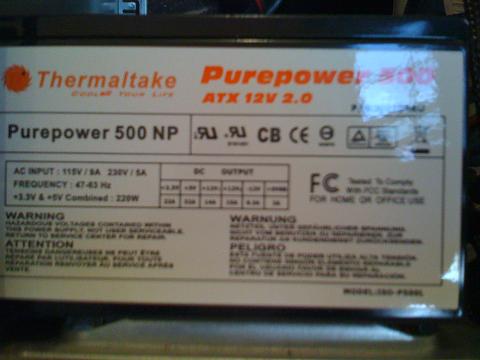
2009-06-27
1. 250 GB Old Seagate PATA hard
disk (US$???), this was burned by the
power supply (the thermal take PSU) on 15 Mar 2007
2. 60 GB PATA
Maxtor hard disk from garage sale (US$0.50), this was burned by the power supply
(the thermal take PSU) on 15 Mar 2007
3. 300 GB Maxtor SATA hard disk from Fry's
(US$89.99). 7200 RPM, 16MB buffer, 1 year warranty, this was also
burned by a new power supply from Fry's and was
refunded, 17 Mar 2007
4. 300 GB Maxtor SATA hard disk from Fry's
(US$89.99). 7200 RPM, 16MB buffer, 1 year warranty, this was also
burned by a new power supply (the antec PSU) from Fry and was
refunded, 17 Mar 2007
5. 300 GB Maxtor SATA hard disk from Fry's
(US$89.99). 7200 RPM, 16MB buffer, 1 year warranty, this was not
working with Fedora Core 6 and was refunded,
18 Mar 2007
6. 200 GB Maxtor SATA, 7200 RPM, don't remember the history of this, 2009-06-27, confirmed disk failure 2009-07-04
7. 320 GB Maxtor SATA, 7200 RPM, don't remember the history of this, 2009-06-27, working well in London 2009-07-04
8. 400 GB Seagate PATA, 7200 RPM, don't remember the history of this, 2009-06-27, confirmed disk failure 2009-07-04
9.320 GB Seagate SATA, 48 GBP, 7200 RPM, 2009-06-27, working well in London 2009-07-04 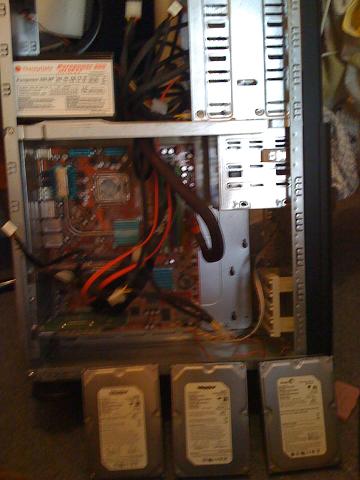
2009-06-27
Partitions
- ext3 164GB, main
- xfs 80GB, media
- ext3 10GB, root
- linux-swap 2GB, swap
- NTSF 32GB
- FAT32 32GB,
Total of 320GB x 2, RAID 1
[2009-07-04 London Bill Hung] [2009-07-04] Abit AB9 Pro User Manual
[2009-06-27 London]Fedex shipped my
server to London, cost almost 300 pounds. There were 3 hard drives in
the case, and all of them were loose. The heat sink for the CPU fell
off. Upon cleaning and power on with just the motherboard, I managed to
kill the thermaltake power supply. Gotta buy another power supply. Reading
the post from March2007, I can tell my attitude changed. Fedora was
just not easy to use enough, and doesn't work out of the box as Ubuntu
does. Ubuntu has been very stable across all different versions. The
Ubuntu has a new release every April and October, which is quite nice.
Ubuntu is the linux OS of choice for me, and I am definitely a convert
now. I even met a friend in hostel, and he saw me using Ubuntu on my
laptop, and he decided to ditch XP and install only Ubuntu on his
laptop after watching me for an hour or so. And I like the whole South
African idea of Ubuntu as well, all nice sharing goodness. Bill Hung
[After Mar 2007] Finally
identified the server
problem was from the intel ICH8R
south bridge chipset. Obviously Fedora Core 6 (FC6) with the linux kernel 2.6.18 is not
supporting the intel ICH8R south bridge chipset. Therefore, FC6 was
unable to be installed onto the SATA hard drive.
The fix was
very easy: just ignore the 6 intel SATA ports on the lower right corner
and use those (JMicron?) SATA ports between the PCI/PCI-e ports. (There are 9 internal SATA ports
and 1 external SATA port (e-SATA) on
the Abit AB9 Pro motherboard).

After the hard drive recognition problem was solved,
Fedora Core 6 (FC6) installation proceeded. However, the installation
encountered another error
in the middle of the installation. Fedora Core 6 claimed that the
installation disk itself has an error. However, doing a disk integrity
on the
FC6 installation disk doesn't show any error. And I
believe this is a hardware problem, because I was able to install FC6
with another motherboard and CPU before.
Some online article
suggested that the 2.6.18 kernel that comes with FC6 doesn't support
the Realtek (dual) Gigabit Ethernet chip as well. That means even after
I get FC6 working with my motherboard and hard drive, I wouldn't be
able to update all the software packages that comes with FC6. I
remember FC6 needs to update hundreds of patches right after a fresh
installation.
Finally, I gave up and
decide to try ubuntu 6.10. Surprisingly, ubuntu recognizes the SATA
drive, video card, sound chip, realtek ethernet port, basically
everything at the first run. The installation was very quick and very
easy. And the default installation can display Japanese and Chinese
perfectly, unlike the default installation of Fedora Core 6.
I think ubuntu would be
a very lovely OS. But my goal is to build a server, so eventually, I
would still want to use FC to be the server OS. Redhat (fedora) is
around for a long time, there are many documentations, and all the
server applications (DNS and mail server stuff) comes with the package.
Anyway, I will play with ubuntu until
the next version of Fedora Core comes out. I don't want to spend time
compiling kernels and hunting for drivers so FC6 would work.
At the first glance, ubuntu has many
cool applications that come with the package. For example: VLC player
and bittorrent client (the official client and Azureus). Also, ubuntu
is built from Debian. I have heard Debian is a stable server build as
well. After enough testing with ubuntu, I might just stay with ubuntu
for the server OS.
This would be the end of the quest to
setup a server at home. After this, it would be things I can play with
on this server setup. =) Thanks everyone who gave me advices.
Having Fun,
Bill Hung
18 Mar 2007
hi,
After burning the 4th hard drive, I have finally identified the
problem: The material that is holding the hard disk is conducting
current. Basically I had a short right under the hard drive.
Great, return, return, return, refund, refund, refund. I got more than
US$500 back from Fry's for all my returns (over 4 times). Very soon
Fry's is going to bad-list me for killing their hard drives and not
paying for them.
Anyway, so I decided to bring all my power supply, motherboard, ram,
cpu, and video card to fry's. I bought another brand new motherboard
(intel) and another hard disk. And I decided to test the system at
Fry's service department.
While I was at Fry's setting up the new system, I encountered another
problem. The Fedora Core 6 (downloaded on 27 Feb 2007) didn't recognize
the SATA chipset (should be intel P965), and the installation of Fedora
Core 6 was unsuccessful.
So I talked to the technicians over there at Fry's. They were nice
enough to lend me a copy of ubuntu, but ubuntu was unable to load
either (stuck on the "uncompressing linux" page). And I also tried to
boot with my Knoppix, and Knoppix only gives me a very limited command
prompt (no GUI).
At the end of the day, the solution was to return the intel motherboard
and the SATA hard disk to Fry's. Then go home and do some research on
what chipset driver Fedora Core 6 supports. It seems like the problem
now is, the motherboard sees the hard drive, but Fedora Core 6 doesn't
know how to deal with the SATA2 hard drive. In the worst case, I would
have to use PATA hard disk for this server system...
I have updated the server info here
http://billhung.net/hardware/bill_hung_s_linux_server_setup_at_home.htm
Never ever thought building a server is this difficult. I will continue
this quest next weekend.
Bill Hung
17 Mar 2007
In an attemp to build a video file server at home, I have already spent
close to US$1000 on hardwares
(http://www.billhung.net/hardware/bill_hung_s_linux_server_setup_at_home.htm
)
For whatever reasons, everything worked one time (I was able to start
windows), and then my hard disk started to smoke after couple hours.
The aluminum foil under the hard disk was burn and the hard disk had a
hole underneath it. Great, now I killed one hard disk.
In order to continue testing the new server setup, I powered off the
power supply, and then connected another PATA IDE hard disk to the
system. Powering on the system again caused the second hard disk to
die... Now 2 hard disks no longer responds to the power supply.
At this point, I suspected the PSU (power supply unit) was defective,
so I went to Fry's to buy a new power supply and a new SATA hard disk
yesterday night. I tested the new SATA hard disk and new PSU with the
server. And then I saw smoke coming out again....
I would go to Fry's to return the burned hard disk. I now suspect the
power supply from the power outlet is unstable. I need to find the root
cause of the problem.
Never thought building a server system is so difficult.
Ah, I decided to use Fedora Core (Red Hat) for the server OS, and I
might use ubuntu as well (as the 2nd server?).
Bill Hung
1.
To Fry's (The one in
Arques)
EVGS e-GeForce 7100GS
Video Card
US$-68.18
3 Mar 2007
2.
To Fry's (The one in
Arques)
AB9 PRO motherboard + 300
GB Maxtor SATA2 Hard Drive
US$-165.62
17 Mar 2007
3.
To Fry's (the one in Campell)
antec power supply (and a Maxtor hard disk is replaced)
US$-64.94
17 Mar 2007
4.
To Fry's (the one in Arques)
AB9 PRO motherboard + 300 GB Maxtor
SATA2 Hard Drive
US$-162.35
17 Mar 2007
5.
To Fry's (the one in Arques)
Intel DG9675SSCK motherboard + 300GB Maxtor SATA2 Hard Drive
US$-227.31
18 Mar 2007
Posted on Friday 10 November 2006
http://www.blindedbytech.com/2006/11/10/how-to-install-fedora-core-6-on-intel-dg965ss-motherboard/
I decided to take the plunge and start playing around with dual core
technology, so I went down to the local store and picked up a new CPU,
RAM, and motherboard. However, what I discovered was that it can
actually be quite difficult actually installing Linux to what I had
purchased, due to the newness of the technology. While support for dual
core CPUs has been around for a while, support for some of the more
recent motherboards has not, and mine was one of them. So, I could wait
for broader support in a few months, or see what I could do now.
First, the reference information — the hardware I used.
* Intel Core 2 Duo Processor E6600
* Intel Classic Series Desktop Board DG965SS
* Kingston KVR533D2N4K2/1G (2x 512 MB)
* Western Digital 74 GB SATA Raptor WD740ADFD
* Antec TruePower 2.0 TPII-430
* JVC XJ-HD166S ATAPI DVD-ROM
Live isn’t so live, after all.
My plan was to battle-test this system with a few different Linux
distributions, and then transition to testing Windows, but alas — my
plans were not to be. I couldn’t even successfully boot up the live CDs
I had! I’ve reproduced the error messages below, for the people
searching for an answer.
If I tried to boot up Knoppix 5.0 DVD (2006-06-01-EN), I would get this
error:
Can't find KNOPPIX filesystem, sorry.
Dropping you to a (very limited) shell.
Press the reset button to quit.
If I tried to boot the Ubuntu 6.10 “Edgy Eft” live CD, I would get this
error:
BusyBox v1.1.3 (Debian 1.1.1.3-2ubuntu3) Built-in shell (ash)
Enter 'help' for a list of built-in commands.
/bin/sh: can't access tty; job control turned off
If I tried to boot the CentOS 4.4 live CD, I wouldn’t even get an error
message — it would just reboot when I tried to select an option.
The interesting thing about the above is that the file system for live
CDs largely lives on the CD itself. Hence, if it couldn’t read it as in
the above, then for some reason, the DVD drive wasn’t accessible. After
doing a little research online, I discovered that the motherboard was
relatively new, and did some rather funky things with the handling of
the IDE devices. Hence, the computer would start to boot off the
optical drive, but when it came time to load up a kernel and actually
boot the system, the computer no longer knew how to access the drive!
This all resulted from a lack of Linux support for the new motherboard
architecture from Intel. Haven’t Linux developers built that time
machine yet to get future architectures into old kernels? (Note that
Windows would have similar problems; if I didn’t have an up to date
Windows install CD or the driver disk, I would be out of luck.)
New hardware? Please stand by, support will be added momentarily…
Linux developers have a reasonably quick turnaround time on these
things, and have, in fact, added support to the kernel. Unfortunately,
they added it to the most recent kernel — 2.6.18. In CentOS 4.4 (as
well as Red Hat Enterprise 4.4), this is 2.6.9-39. In Knoppix 5.0 is
2.6.17. In Ubuntu Edgy Eft, it’s 2.6.17. I would need to wait for the
next release before getting support for the 965 chipset. Fortunately
for me, Fedora Core 6 was released with the 2.6.18 kernel, meaning that
I could use that instead. Being that I didn’t really feel like
re-authoring my own custom live CD, I went with that, and will just
have to wait for future releases on the others.
The devil is in the details.
I downloaded Fedora Core 6 for x86_64. I’m fairly certain that the i386
version would install in much the same manner, but decided that I might
as well use the 64-bit version. I put in the DVD and booted up the
computer.
However, it brought up a text-mode window to select language, keyboard,
and installation method: something had gone wrong, because in a normal
install, the full graphical environment would have been displayed. Upon
selecting an installation method of “Local CDROM”, the installer
reported the error “No driver found” — looks like I had some work to do.
First, I rebooted and struck F2 to get into the BIOS. Under the
“Advanced” tab, “Drive Configuration”, I set “Configure SATA as” to
“AHCI”. I then exited, saving changes.
Next, I rebooted with the the install DVD in the drive. When the
message came up “To install or upgrade in graphical mode, press the
<enter> key.”, I didn’t just hit enter — instead, I typed
the following line:
linux all-generic-ide pci=nommconf
This is the magic trick. After skipping the media check, the full
graphical environment came up at that point, and I could install as per
normal. I did so, and the computer rebooted after installation.
So close, I can taste it!
The computer boots up, and the Internet connection was recognized
straight away. The resolution was set to 800×600, so I went to
System->Administration->Display, and clicked on the
Hardware tab. I changed the monitor to “Generic CRT Display/Monitor
1280×1024″, and then I could set the resolution to (naturally)
1280×1024. System updates worked fine, and programs launched correctly.
I could surf the web without issue (except for flash support, which is
a whole other problem I won’t address here).
However, there was something wrong…the optical drive no longer worked!
I could put in a CD or DVD, and they wouldn’t be recognized by the
operating system, despite having worked fine for the install process.
The problem here is in GRUB, the Linux bootloader. While the install
had correctly added pci=nommconf to the loader, it had neglected to
include the all-generic-ide tag.
I edited /etc/grub.conf as root, and changed the line…
kernel /vmlinuz-2.6.18-1.2798.fc6 ro root=/dev/VolGroup00/LogVol00
pci=nommconf rhgb quiet
…to…
kernel /vmlinuz-2.6.18-1.2798.fc6 ro root=/dev/VolGroup00/LogVol00
all-generic-ide pci=nommconf rhgb quiet
I needed to re-install GRUB, with grub-install /dev/sda1. A reboot
later, and things worked fine.
Success!
So yes, Virginia, it is possible to install Linux on this wonky
motherboard. What’s more, since the support is in the kernel (and far
better people than myself are slavishly hacking away at it), it’s quite
likely that distributions will support this out of the box in the
future without special handling. I haven’t had any issues with this set
up yet, and it runs in 64-bit mode to boot.
Some closing thoughts…
* The problems I experienced were largely a result of the IDE channel
handling of the chipset. If I had an SATA optical drive, I could
probably have gotten up and running on Fedora Core 6 without any extra
futzing. This also may have gotten Ubuntu to install as well.
* This also means that if you have, say, ATA drives (not SATA), you may
experience a whole host of other problems.
* Ubuntu “Edgy Eft” should have some backports built into it to handle
the Intel 965 chipset, however, I couldn’t get them to work. It’s
feasible that this CD could boot on an ATAPI optical drive, if given
the right options.
* While these problems will probably go away in new releases, it’s not
guaranteed. The chipset will at least be better supported.
* I’m not looking forward to the Windows installation. The chipset
claims that I should be fine with Windows XP SP2 or Windows Media
Center Edition. Only time will tell.
http://www.webservertalk.com/message1762855.html
General Schvantzkoph
View Ip Address Report This Message To A Moderator Edit/Delete Message
12-19-06 12:17 AM
I'm having an odd problem with my new Core2 system. The system has an
Abit
AB9 Pro motherboard (P965 northbridge, ICH8R southbridge), two Seagate
320G SATA drives, 4G of DDR2.
Each drive has three partitions, two 8G partitions to hold OSes and
SWAP,
and 1 large 278G partition that is one half of a software RAID0
partition.
When I do a Verilog regression, which involves lots of writes, on one of
the small partitions the I/O system hangs. I'm still able to ssh into
the
machine and I can do some operations that don't involve disk accesses,
for
example ls will work on the part of the file system that's in memory but
will stop when it hits a part of the file system that isn't cached. The
hang happens very quickly. When I do the regression on the RAID0
partition
this doesn't seem to happen. Also I've tried this with partitions on
both
disks, they both fail identically, so this isn't the result of a broken
disk or a bad cable.
I've run Memtest86+ and the Seagate disk diagnostics and neither found a
problem, although it should be noted that neither of those tools
understands the 965 chipset. I've also switched the BIOS mode for the
Intel
SATA controllers from AHCI back to IDE, that didn't make any difference.
I'm using 64 bit Fedora Core 6 with a 2.6.19.1 kernel. The BIOS is the
latest one that ABit has.
This could be a bad motherboard but I suspect that if it were I would
have
seen a problem with either Memtest86+, the Seagate diagnostics, the
install and updates, or when I untared my tools which are multiple
gigabytes in size. However none of those had a problem. My suspicion
is that mixing both RAID and non-RAID partitions in the same partition
table is the source of the problem, but I don't why this should be.
Does anyone have any theories? Is anyone seeing anything similar?
[ Post a follow-up to this message ]
Re: Disk I/O problem on Abit AB9 Pro, Core2 system
sndive@gmail.com
View Ip Address Report This Message
To A Moderator Edit/Delete Message
12-20-06 12:18 AM
General Schvantzkoph wrote:
> I'm having an odd problem with my new Core2 system. The system
has an Abit
> AB9 Pro motherboard (P965 northbridge, ICH8R southbridge), two
Seagate
> 320G SATA drives, 4G of DDR2.
>
> Each drive has three partitions, two 8G partitions to hold
OSes and SWAP,
> and 1 large 278G partition that is one half of a software
RAID0 partition.
> When I do a Verilog regression, which involves lots of writes,
on one of
> the small partitions the I/O system hangs. I'm still able to
ssh into the
> machine and I can do some operations that don't involve disk
accesses, for
> example ls will work on the part of the file system that's in
memory but
> will stop when it hits a part of the file system that isn't
cached. The
> hang happens very quickly. When I do the regression on the
RAID0 partition
> this doesn't seem to happen. Also I've tried this with
partitions on both
> disks, they both fail identically, so this isn't the result of
a broken
> disk or a bad cable.
>
> I've run Memtest86+ and the Seagate disk diagnostics and
neither found a
> problem, although it should be noted that neither of those
tools
> understands the 965 chipset. I've also switched the BIOS mode
for the Inte
l
> SATA controllers from AHCI back to IDE, that didn't make any
difference.
>
> I'm using 64 bit Fedora Core 6 with a 2.6.19.1 kernel. The
BIOS is the
> latest one that ABit has.
>
> This could be a bad motherboard but I suspect that if it were
I would have
> seen a problem with either Memtest86+, the Seagate
diagnostics, the
> install and updates, or when I untared my tools which are
multiple
> gigabytes in size. However none of those had a problem. My
suspicion
> is that mixing both RAID and non-RAID partitions in the same
partition
> table is the source of the problem, but I don't why this
should be.
>
> Does anyone have any theories? Is anyone seeing anything
similar?
Of the top of my head that sounds like a problem with the ICH8 driver
in the kernel
(or the driver exposes an ICH8 hardware bug).
If you end up getting a real hw raid controller (as a "temporary"
solution) please let us know.
I'd hate to buy more pata drives if I need more space.
Did you post to the kernel mailing list?
I'm seeing some problems with reiserfs in 2.6.18
(and reiserfsck "fixed" the "problem": all the files are in /lost+found
now)
Are you running ext3 or something else? Raw parititions?
I could augment the memtest86 replacement I posted here a while ago
to include hdparm like benchmarking functionality, but destructive
(testing read and write perf).
I suspect kernel developers already have something like that for
testing though.
[ Post a follow-up to this message ]
Re: Disk I/O problem on Abit AB9 Pro, Core2 system
sndive@gmail.com
View Ip Address Report This Message To A Moderator Edit/Delete Message
12-20-06 12:18 AM
General Schvantzkoph wrote:
> I'm having an odd problem with my new Core2 system. The system
has an Abit
> AB9 Pro motherboard (P965 northbridge, ICH8R southbridge), two
Seagate
> 320G SATA drives, 4G of DDR2.
>
> Each drive has three partitions, two 8G partitions to hold
OSes and SWAP,
> and 1 large 278G partition that is one half of a software
RAID0 partition.
> When I do a Verilog regression, which involves lots of writes,
on one of
> the small partitions the I/O system hangs. I'm still able to
ssh into the
> machine and I can do some operations that don't involve disk
accesses, for
> example ls will work on the part of the file system that's in
memory but
> will stop when it hits a part of the file system that isn't
cached. The
> hang happens very quickly. When I do the regression on the
RAID0 partition
> this doesn't seem to happen. Also I've tried this with
partitions on both
> disks, they both fail identically, so this isn't the result of
a broken
> disk or a bad cable.
It occurred to me that it could also be a problem with the sata
circuitry on that disk model.
Could you try a different brand of a hard drives?
[ Post a follow-up to this message ]
Re: Disk I/O problem on Abit AB9 Pro, Core2 system
General Schvantzkoph
View Ip Address Report This Message To A Moderator Edit/Delete Message
12-20-06 12:18 AM
On Tue, 19 Dec 2006 15:05:31 -0800, sndive wrote:
> General Schvantzkoph wrote:
>
> Of the top of my head that sounds like a problem with the ICH8
driver
> in the kernel
> (or the driver exposes an ICH8 hardware bug).
> If you end up getting a real hw raid controller (as a
"temporary"
> solution) please let us know.
> I'd hate to buy more pata drives if I need more space.
> Did you post to the kernel mailing list?
>
> I'm seeing some problems with reiserfs in 2.6.18
> (and reiserfsck "fixed" the "problem": all the files are in
/lost+found
> now)
> Are you running ext3 or something else? Raw parititions?
>
> I could augment the memtest86 replacement I posted here a
while ago
> to include hdparm like benchmarking functionality, but
destructive
> (testing read and write perf).
> I suspect kernel developers already have something like that
for
> testing though.
I doubt it's the drives or the ICH8R controller. I've been running
Verilog
regressions for the last 24 hours on the soft RAID0 partition and I
haven't had a problem there, in fact last night I had two regression
streams running so both cores were running flat out for about 8 hours.
When I use one of the small non-RAID partitions I get the hang up in
under
a minute so it looks like a real bug in the SATA driver.
I'm using EXT3 and Seagate 320G drives. I'm thinking about getting a
third
identical drive to use as the non-RAID drive, if I can run on that drive
where there will be no RAID partitions, then that should confirm that
the
problem is mixing RAID and non-RAID on the same drive.
BTW if you have a Memtest86 replacement it would be nice if you made it
available, put it on Sourceforge or something. It looks like Memtest86+
has
been abandoned, there haven't been any updates since 2005.
http://www.newegg.com/Product/ProductReview.aspx?Item=N82E16813127004&SortField=0&SummaryType=ALL&Pagesize=10&Page=2
challenge for Fedora, Ultimately Worthwhile
Pros: Lightning FAST, Stable, Overclockable, Comes with nice toys
Cons: Cutting edge ICH8R chipset betrayed by older Linux distros, weird
mobo layout
Other Thoughts: Getting this mobo to run Fedora 6 was a hair-pulling
experience. The key: Set the ICH8R SATA controller into "ACHI Mode".
Plus, the stock FC6 install would not enable the onboard LAN interfaces
(I had to throw in a 10/100 card until I could run pup to get the
kernel to 2.6.19-1.2911). But once this was done, I was TOTALLY
enthralled with the performance of the board, and the VALUE of this
board. You can have your ASUS - this board ROCKS!
http://halisway.blogspot.com/2006/10/running-ubuntu-610-on-abit-ab9.html
Are you using a Abit AB9 motherboard?
If so, make sure you are indeed using the JMicron controller (between
the PCI slots, not the six ports to the lower right of the motherboard
or the single port).
If you still are getting errors please make sure you disable "Legacy OS
USB support" in the BIOS and try running the installer with the irqpoll
option.
|


